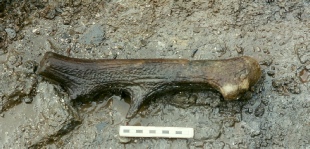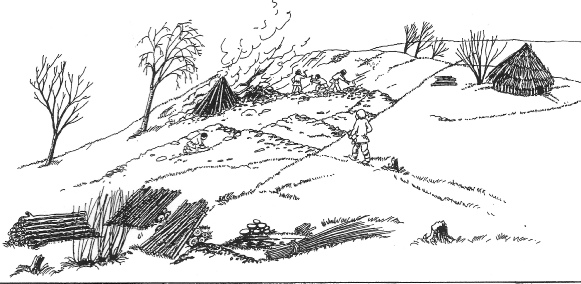

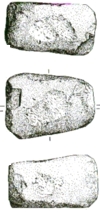
Here we find an ancient scree-
The presence of “ancient workings” and stone mining hammers at this location was
first recorded in 1813, and in 1937 Oliver Davies re-
Mining on Copa Hill circa. 2000 BC (Brenda Craddock)
The first modern excavation at this site were undertaken by Simon Timberlake in 1986. A 12 m section was cut through the Central Tip exposing stone tools and buried charcoal layers from which three Bronze Age radiocarbon dates were obtained (Timberlake & Switsur, 1988)
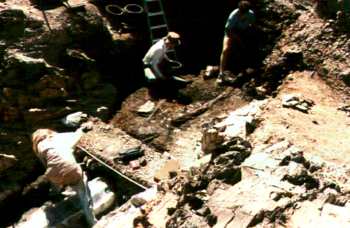
The Early Mines Research Group carried out excavations within the opencast between
1989 and 1999, uncovering a landscape of rock-
The mine seems to have been suffering severe problems of flooding from at least 1850 BC, some 200 years after its discovery at the beginning of the Early Bronze Age
Excavations have uncovered a unique series of hollowed-
One 5 metre section of 4000 year-
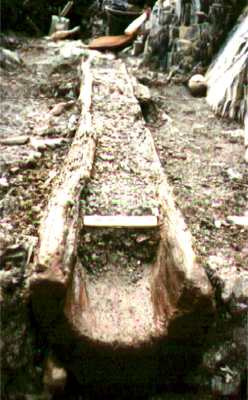
Other organic artefacts such as red deer antler picks and hammers, fire-
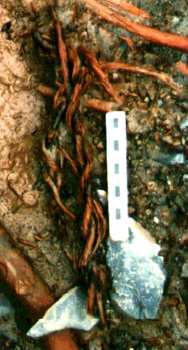
Red deer antler pick/hammer
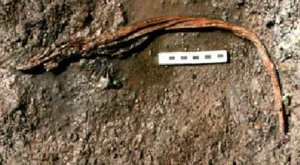
Hazel withy handles for the hammer stones
The miners had used simple stone cobble tools which they had brought with them from
the coast together with cut oak stemples for climbing down into the veins and oak
brushwood for fire-
In some places the lead ore had also been removed, but most of this was discarded
alongside the veins or in the waste heaps, either as lumps or else as crushed-
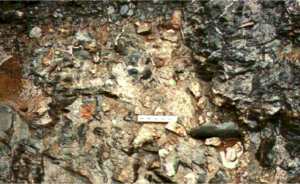
Some of the galena may have been intentionally extracted as lead ore is easy to smelt and work, even though there seems to have been little use made of it during the Early Bronze Age in Britain.
This together with the evidence for the extraction and crushing of chlacopyrite, plus the lack of evidence for its further processing, of any traces of smelting, or of habitation, remains one of the many mysteries which surrounds this site (Timberlake 2003).
This website was made possible by a grant from the Cambrian Archaeology Association

It seems possible that the crushed copper-
The wooden log launders may also have been used for washing and separating the lead from the copper, and the sulphide from the carbonate fraction of mineral.
A possible reconstruction of this process is shown below.
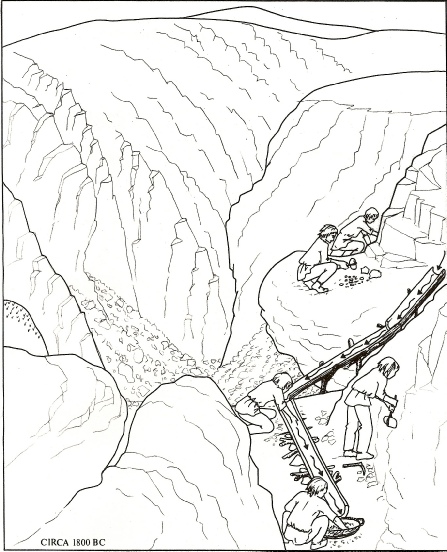
Withy rope or tie
1994. S. Timberlake)
(S. Timberlake)
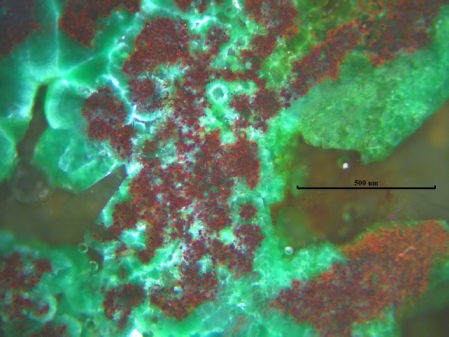
mine spoil : microscope view under X-
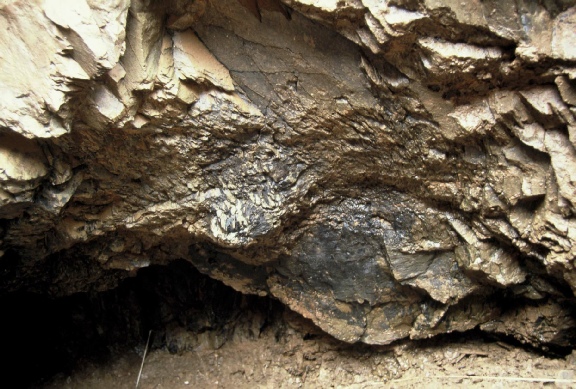
Marks of stone tool use on roof of mine gallery. (B. Craddock and S. Timberlake)
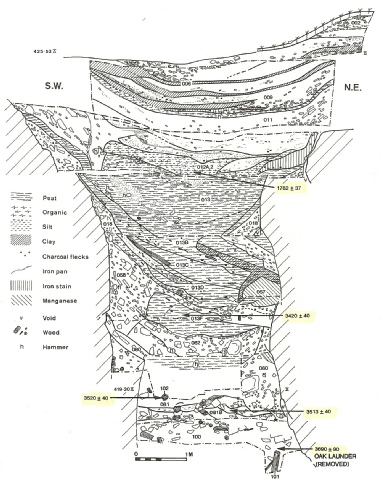
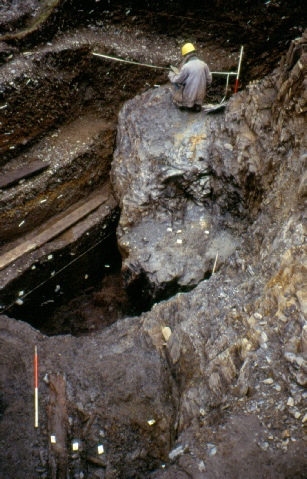
Some 4-
The gradual infill of this mine had been taking place since well before its abandonment in about 1600 BC, after most of the copper mineral had already been removed.
